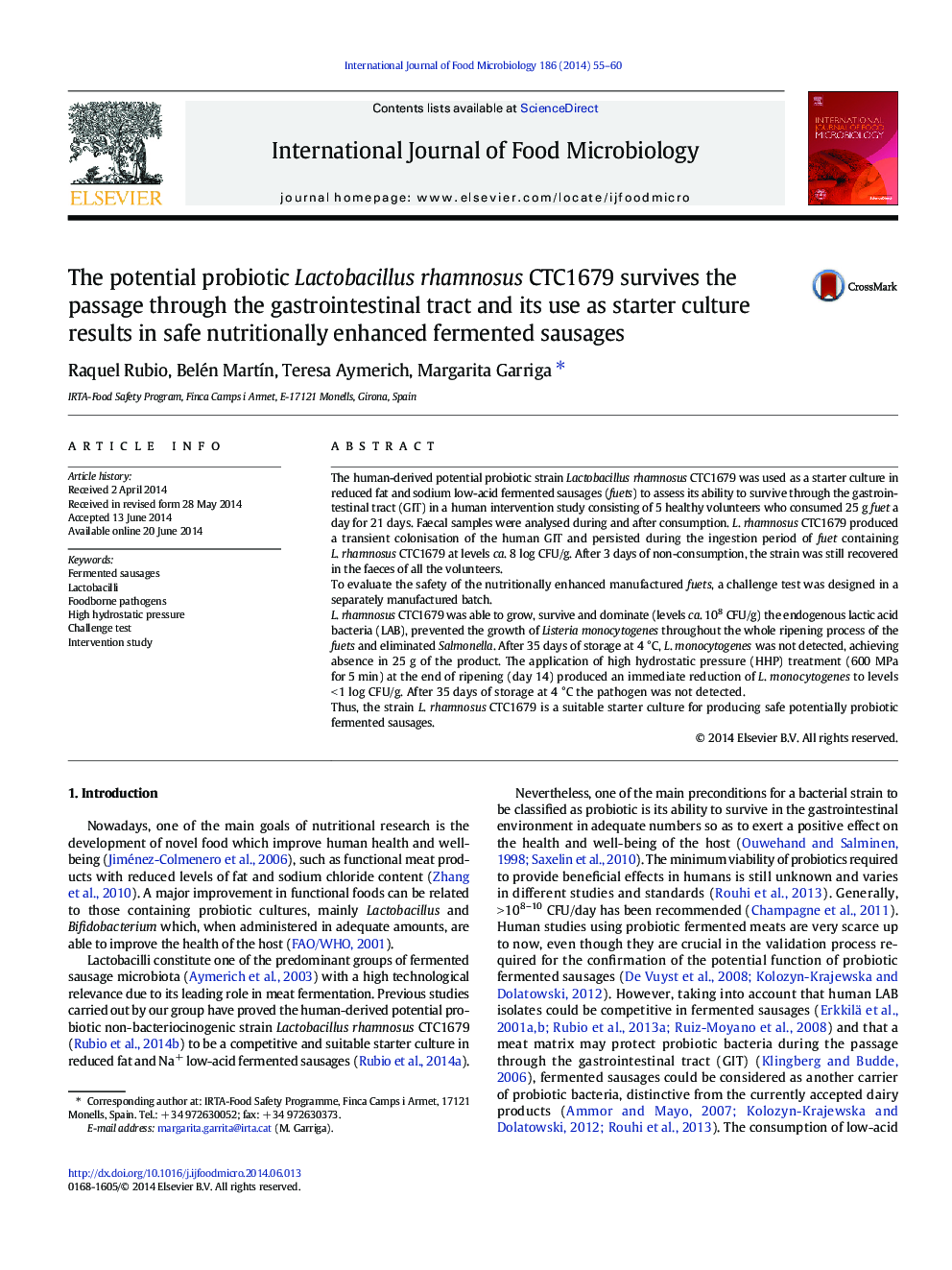| کد مقاله | کد نشریه | سال انتشار | مقاله انگلیسی | نسخه تمام متن |
|---|---|---|---|---|
| 6290034 | 1616597 | 2014 | 6 صفحه PDF | دانلود رایگان |

- L. rhamnosus CTC1679 was able to dominate the endogenous LAB in fuets.
- Fuets fermented with L. rhamnosus CTC1679 were microbiologically safe.
- HHP treatment after ripening produced an immediate reduction of L. monocytogenes.
- L. rhamnosus CTC1679 was able to survive and persist in the human GIT.
The human-derived potential probiotic strain Lactobacillus rhamnosus CTC1679 was used as a starter culture in reduced fat and sodium low-acid fermented sausages (fuets) to assess its ability to survive through the gastrointestinal tract (GIT) in a human intervention study consisting of 5 healthy volunteers who consumed 25 g fuet a day for 21 days. Faecal samples were analysed during and after consumption. L. rhamnosus CTC1679 produced a transient colonisation of the human GIT and persisted during the ingestion period of fuet containing L. rhamnosus CTC1679 at levels ca. 8 log CFU/g. After 3 days of non-consumption, the strain was still recovered in the faeces of all the volunteers.To evaluate the safety of the nutritionally enhanced manufactured fuets, a challenge test was designed in a separately manufactured batch.L. rhamnosus CTC1679 was able to grow, survive and dominate (levels ca. 108 CFU/g) the endogenous lactic acid bacteria (LAB), prevented the growth of Listeria monocytogenes throughout the whole ripening process of the fuets and eliminated Salmonella. After 35 days of storage at 4 °C, L. monocytogenes was not detected, achieving absence in 25 g of the product. The application of high hydrostatic pressure (HHP) treatment (600 MPa for 5 min) at the end of ripening (day 14) produced an immediate reduction of L. monocytogenes to levels < 1 log CFU/g. After 35 days of storage at 4 °C the pathogen was not detected.Thus, the strain L. rhamnosus CTC1679 is a suitable starter culture for producing safe potentially probiotic fermented sausages.
Journal: International Journal of Food Microbiology - Volume 186, 1 September 2014, Pages 55-60